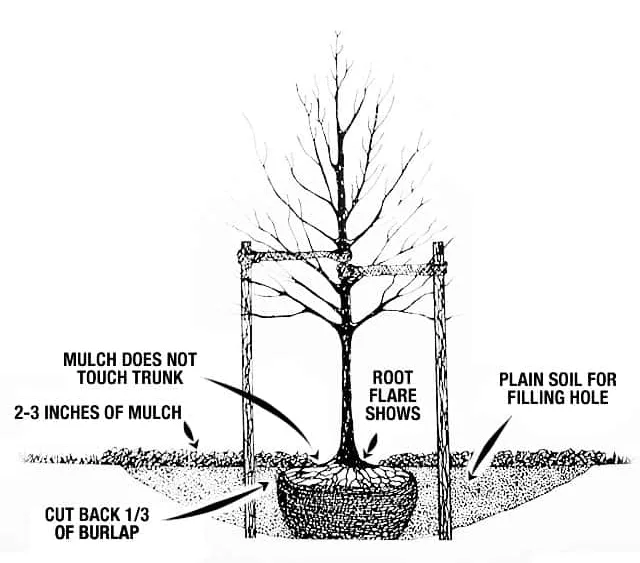Kelly Jackson
Christian County Extension Office
The Secret to Healthy Trees is Rooting Depth
You may not be aware, but the Extension Service makes house calls. And when homeowners call us out, it is most often over concern for their trees. Rightly so as this is the biggest investment of your living landscape and the cost of losing and removing a tree can be significant.
Homeowners report declining tree symptoms as dieback in the canopy, poor growth, and leaves looking scorched or dropping prematurely. Disease and insects are usually the first suspects we assume when we have trouble with a landscape tree, but those problems happen less than you might think. The trouble with a declining tree is more often traced back to just one thing – girdling roots.
Girdling roots occur when roots fail to grow out and away from the tree and instead grow in a circle around the trunk of the tree. Eventually these circling roots begin to cut into the trunk restricting the flow of water and nutrients to the canopy and shortening the life of the tree. In a recent survey, stem-girdling from circling roots were reported to occur in 52% of landscape trees.
Nursery production systems have a great influence on root development, especially containerized trees, where roots begin growing in a circling pattern as they develop against the container walls. And it has often been recommended to disturb the root ball just before planting to prevent stem-girdling root formation. But the results of that practice have been variable and in fact there is evidence that most of those roots, even if left undisturbed, will not continue to develop into girdling roots.
The real cause for the development of girdling roots is planting depth (the burial of the root collar). In research done with October Glory Maples, the risk of girdling root development increased to 48% when the root flare was planted 6 inches below grade and to 71% when planted 12 inches below grade.
As the homeowner, it is most important that trees are planted with the root flare at the soil grade. This may require, in the case of balled and burlapped trees, the removal of some of the soil ball until you can locate the root flare. Then measure the depth and dig your planting hole. I’ve planted many trees and I am always surprised to find how deep the root flare can be in the root ball, as much as 10 inches in a few cases.
If your tree is already impacted from girdling roots, try to remove the root in a way that minimizes injury to the trunk. Using a chisel or saw, try to cut the root where it first touches the trunk and then several inches away from the trunk and remove that section. Don’t remove the section that is embedded into the trunk as that may cause more injury, unless the root is somewhat loose. Very large girdling roots should not be cut or removed.






